Detailed introduction of the Estonian Academy of Arts:
Introduction and Overview
Location: Located in Tallinn, the capital of Estonia.
Student size: There are currently more than 1,100 students, including about 80 international students, from all over the world.
Subject range: As the only university-level art and design school in Estonia, it covers a number of art-related fields such as fine arts, design, architecture, media, visual research, art history, and cultural heritage protection.
History and establishment time
The origin of the academy can be traced back to 1914, when the Estonian Art Association founded the Tallinn School of Arts and Crafts, the first art school in Estonia.
After the Estonian War of Independence, the school became the National School of Arts and Crafts in 1920 and completed educational reforms in 1922.
In 1938, the school was reorganized into two independent institutions: the National School of Industrial and Painting Arts and the National Higher School of Art.
After Estonia was occupied by the Soviet Union in 1940, the school underwent several name changes and adjustments.
1989 In 1999, the school was renamed Tallinn University of the Arts.
In 1999, the college joined the EU education system Erasmus and Leonardo da Vinci.
School Strength
Teaching Staff: It has 109 academic staff and 138 administrative staff. Most of the teachers are internationally recognized artists, architects, designers, historians and scholars, who can provide students with personalized learning guidance and personal tutoring.
Scientific Research Achievements: The school actively carries out various art research projects. Its research results have a certain influence in the Estonian and even international art fields, and have played an important role in promoting visual cultural innovation, such as research and practice in animation, contemporary art and other fields.
International Exchange: It has established cooperative relations with more than 100 top art, design and architecture universities around the world, and has joined a number of international higher education networks, such as ELIA, Cumulus, EAAE, Kuno, Cirrus etc., carry out student and teacher exchange programs, and provide students with broad international exchange and internship opportunities.
Institutional nature
Public university.
Educational philosophy
Committed to cultivating students' creativity and research ability, promoting comprehensive learning, and enabling students to obtain art education that meets contemporary higher education standards. The goal is to enable graduates to successfully establish themselves in society as independent creators and thinkers. Therefore, the curriculum focuses on cultivating students' analytical ability and critical thinking.
Key laboratories and disciplines
Key disciplines: In the 2024 QS World University Subject Rankings, the school's art and design disciplines are ranked in the top 200-250 in the world. Its jewelry design major is unique, with humanistic spirit as the core, helping students expand their cognition and control of visual arts, master diversified material properties and metalworking skills, and tap students' talents and creativity; the animation major also has a high level of teaching. The course involves theoretical research on animation directors and film production, including interdisciplinary content such as animation, screenwriting, and animation media history and theory, focusing on the teaching of classic and experimental techniques.
Key laboratories: Although no specific key laboratories are explicitly mentioned, the school provides students with practical teaching facilities, such as Tamsai on Muhu Island and Hemtal in Viljandi County, to meet students' needs in artistic practice.
Departments
The school has the following departments:
Department of Architecture: Provides education in majors such as architecture and urban planning, and cultivates students' professional capabilities in architectural design, urban planning and design.
Department of Design: Covers many design majors such as jewelry design, ceramics, glass products, leather products, fashion design, product design, etc., focusing on cultivating students' innovative design thinking and practical ability. Students can choose different design majors for in-depth study.
Faculty of Arts and Culture: including majors such as art history, cultural heritage and protection. Through the study of art history and the protection of cultural heritage, students are trained to understand and inherit art and culture.
Faculty of Fine Arts: with majors such as painting, drawing, and sculpture, it focuses on cultivating students' creative ability and artistic expression in the field of pure art.
Ranking
In the 2024 QS World University Rankings by Subject, the school's art and design disciplines are ranked in the top 200-250 in the world.
Fees
Tuition fees for different majors vary. Except for the undergraduate majors of architecture and urban planning (5 years), which are 4,100 euros/year, the tuition fees for other undergraduate majors are 3 years and 4,100 euros/year; the tuition fee for international students in the animation master's program is 4,000 euros/year, and the tuition fees for eight English-taught master's programs such as design and crafts are also different. For details, please refer to the school's official website.
Campus
Campus facilities: The school has a newly built teaching building with an innovative and inspiring environment, providing students with a good learning and creative space. In addition, the school has renovated the dormitories together with the Estonian Academy of Music and Drama to provide students with a comfortable living environment.
Campus life: The school's departments regularly organize student, teacher and department exhibitions and public lectures in Tallinn and other places to enrich students' campus cultural life. The school also actively publishes various academic works, textbooks, research materials, etc., creating a strong artistic and academic atmosphere.
-
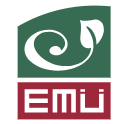
Estonian University of Life Sciences
-

Tallinn University of Technology
-
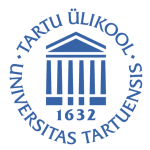
University of Tartu
-
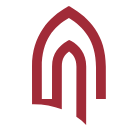
Tallinn University
-

Estonian School of Diplomacy
-
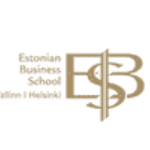
Estonian Business School
-
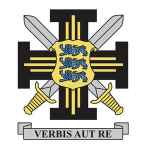
Estonian Academy of Security Sciences
-

Estonian Academy of Arts
-
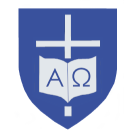
Institute of Theology of the EELC
-
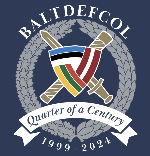
Baltic Defence College
-

Mesoamerican University
-

Istmo University
-

Mariano Galvez University of Guatemala
-

Regional University of Guatemala
-

Galileo University
-

Francisco Marroquín University
-

Rafael Landívar University
-

University of the Valley of Guatemala
-

University of San Carlos of Guatemala
-

Technological Institute of Tlaxcala Plateau
-

Golfo University
-

Technological University of South Sonora
-

Technological University of Huejotzingo
-

Tizimín Institute of Technology
-

Chilpancingo Institute of Technology
